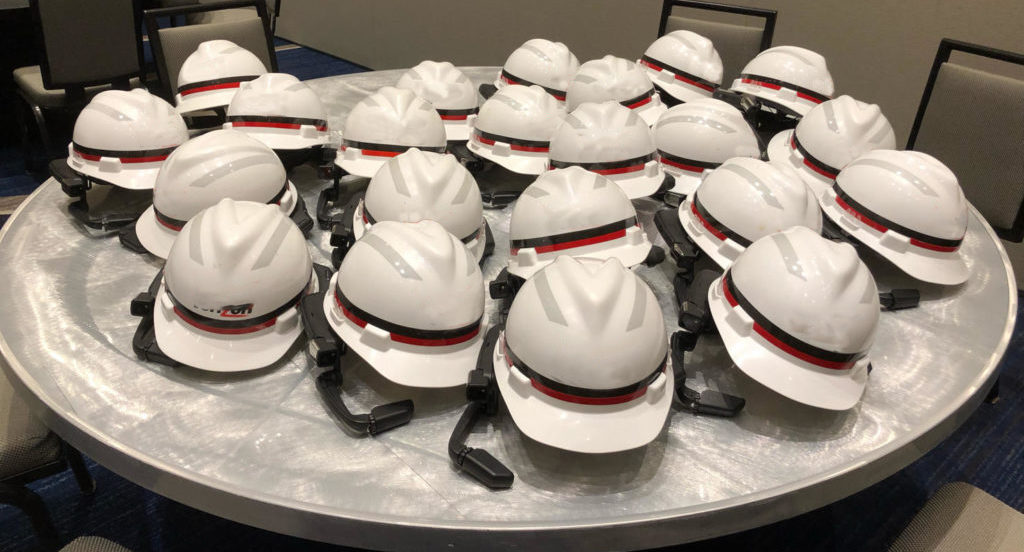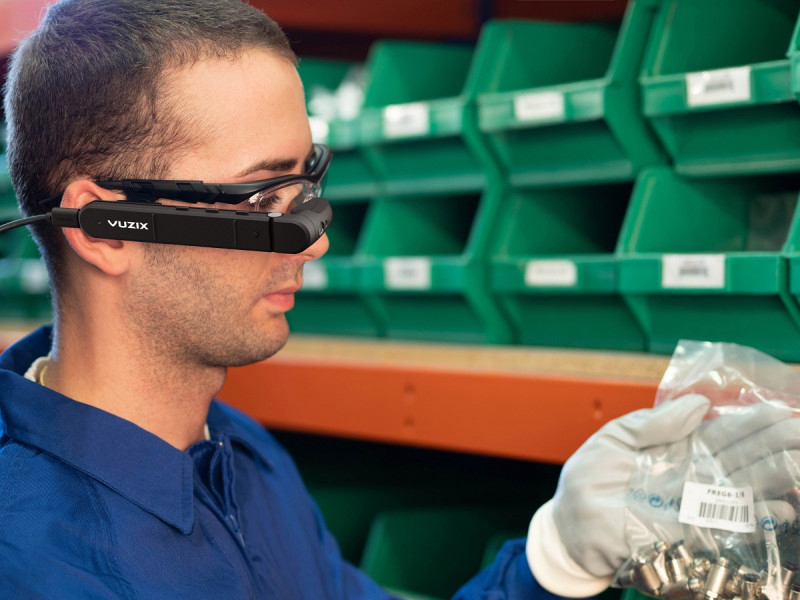Augmented Reality (AR) in the enterprise is gaining steam and seeing results. So why do we seem to be stuck in the perpetual pilot?
We have all seen the slides depicting the 25% productivity savings, the 100% elimination for errors when someone is doing a task for the first time or fixing things 75% faster when using AR wearables. These are very impressive results for the individual use cases and are achievable by any organization with the right use cases. It also why we are seeing more and more enterprises jumping into the AR wearable pilots.

However, even with the success of their pilots, it has been difficult for enterprises to make the commitment of full blow rollout of the technology. There are certain companies that have expanded, and some have fully deployed AR wearables to a large workforce, but these are unique not the norm. As I discussed in my previous article, Enterprise Virtual Reality Is Here Now, the deployment, device management, and content distribution are key to the success of a large deployment and fortunately for AR many of those challenges have been solved.
So, the question is, why a successful pilot but not a full deployment?
Perhaps it is because we are planning for a pilot and not a successful launch. It is really easy to plan for a pilot and know what to do when things don’t go well, just stop what you are doing. However, if we are only planning for a pilot, we don’t always see the full picture. Pilots typically are trying to prove a subset of results, but no real success. If those results are not as expected we stop, but if they prove positive, what’s next? Have you planned for deploying to 100s or 1000s of users? Do you have a full understanding of the number of use cases impacted? Or the variety of challenges you might face with different environments, users or connectivity?
By looking at your AR wearable deployment as a full rollout you will ask a number of questions that won’t likely come up in the pilot discussion.
First, who will benefit the most from a full deployment? In planning for a pilot we tend to look at a specific group or task. Sure, we might initially look at the entire business but quickly single out one group or another to build a plan. Sometimes we start with a specific group of users in mind. They could be the path of least resistance or the most tech-friendly. For a pilot these might be the perfect groups to use, however forgetting the others will impede your chances to expand upon the success.
I myself have fallen victim to this, doing a great pilot with great results but then as we roll out, we realize the overall populations has many more limitations or requirements than our test group. This quickly becomes time-consuming and expense requiring lots of rework and ultimately hurting the overall user satisfaction.
Approaching the pilot as a full deployment, looking at how to benefit the bottom line overall and understand the impact across the entire company can help define additional uses cases, realize potential challenges or find similar audiences that could also benefit with little additional effort. This approach will help you better understand the unique metrics to your organization, rather than focusing on where others have seen success.

A full rollout plan helps you better understand the full cost of deployment. Many large companies can afford a few headsets and software licenses for a pilot, but when we look at the big picture, we can get a better understanding of what would need to be true to succeed or get the financial commitment to deploy. A $10k, $50k or even $100k pilot can provide great results and data to show the benefit of expanding. However, at $3mil for a full roll out to 1,000s of employees, it becomes much more difficult to get approval.
Having your stakeholders understand the cost of a full rollout can provide the right perspective to those involved. The stakeholders might also provide the financial challenges they face that can provide a better understanding of their needs and commitment. This also provides them with the opportunity to discuss additional use cases, success measures and audiences they see helping define success.
Another reason to look at your entrance into AR wearables as a full rollout it is no longer becomes about specific use cases. During a full rollout there are many use cases and groups that will benefit. Making the leap from one or two use cases to 10, 100 or 1000s provides its own challenges. Understanding the commitment upfront on how to define, create and deploy the full set of use cases helps understand the true cost to the business.
For any deployment to be successful users must make the wearable part of their daily routine.
Many of the results we see today are linked to an individual use case or a single task. While impressive results, these results can provide an unrealistic view of how the workforce will succeed using AR wearable when deployed as an on-the-job tool. Looking at all the use cases and operational challenges provide a better perspective of the work needed. A pilot can only require a small team to deploy but the full rollout will change the way many teams will work, not just those wearing the headsets.
As I mentioned before the selection of the users for a pilot becomes key. We often gravitate to “friendly” or “tech-savvy” users for our pilot. These users are usually more comfortable with trying new things and more vocal at highlighting struggles, but also tend to be more forgiving of new technology. Not including the overall population in your discovery phase and understanding their environments, tasks, and work habits can negatively impact your results in full deployment. User acceptance is one of the main reasons projects don’t succeed as well as expected. In the past, I have had great success at pilot but struggled in the larger launch based on not getting feedback on a challenging feature or hardware that pilot users forgave or found a workaround.
AR wearables hardware physical attributes are as important as the software or use cases you are deploying. Without considering the environments of all users one can find larger deployments a struggle. For examples when I was deploying AR glasses across 12 different locations, we were able to understand unique building environments. Though all locations housed the same functions the building age, design and technology affected the outcome for the users.

You might have 20 manufacturing plants around the globe but each one will be different, affecting connectivity, access, storage, etc. Each one of those items needs to be considered when deploying the hardware. Selecting a single location for your pilot may be needed but not understanding the entire landscape may hurt your goal of a full deployment.
Finally, by focusing on a full rollout you are can get all the stakeholders involved. As a pilot or Proof of Concept (POC) your team might be the only team with skin in the game. Including all the stakeholders from operations and IT to finance and Health and Safety, not only do they provide valuable input, if they have a vested interest in the success, they are more likely to help you deploy when it is time for a full rollout.
By no means am I saying you should not do a POC or pilot with AR wearables, you should. POCs can be short, cheap and simple and produce great results. I have conducted POC in just a couple of days and have received data that has stopped me in my tracks forcing me to adjust with little investment. I have also seen great results piloting AR wearable helping me understand gaps, challenges, and adjustments needed to succeed, allowing me to be agile.
However, with each Proof of Concept or Pilot, I always plan for success at the start. It makes the transition, the budgeting and the acceptance of expanding much easier to accomplish and ultimately provides better results.
